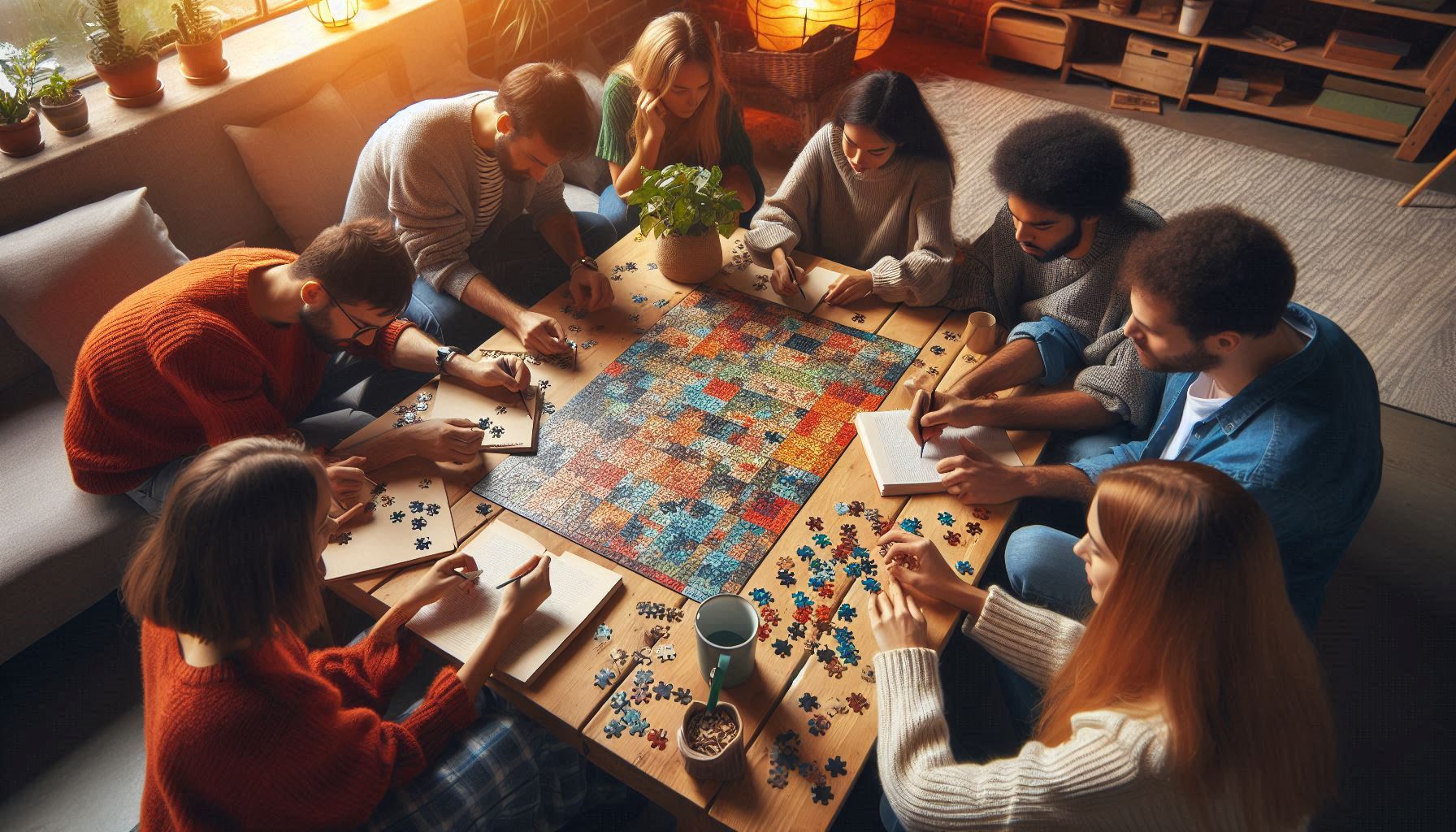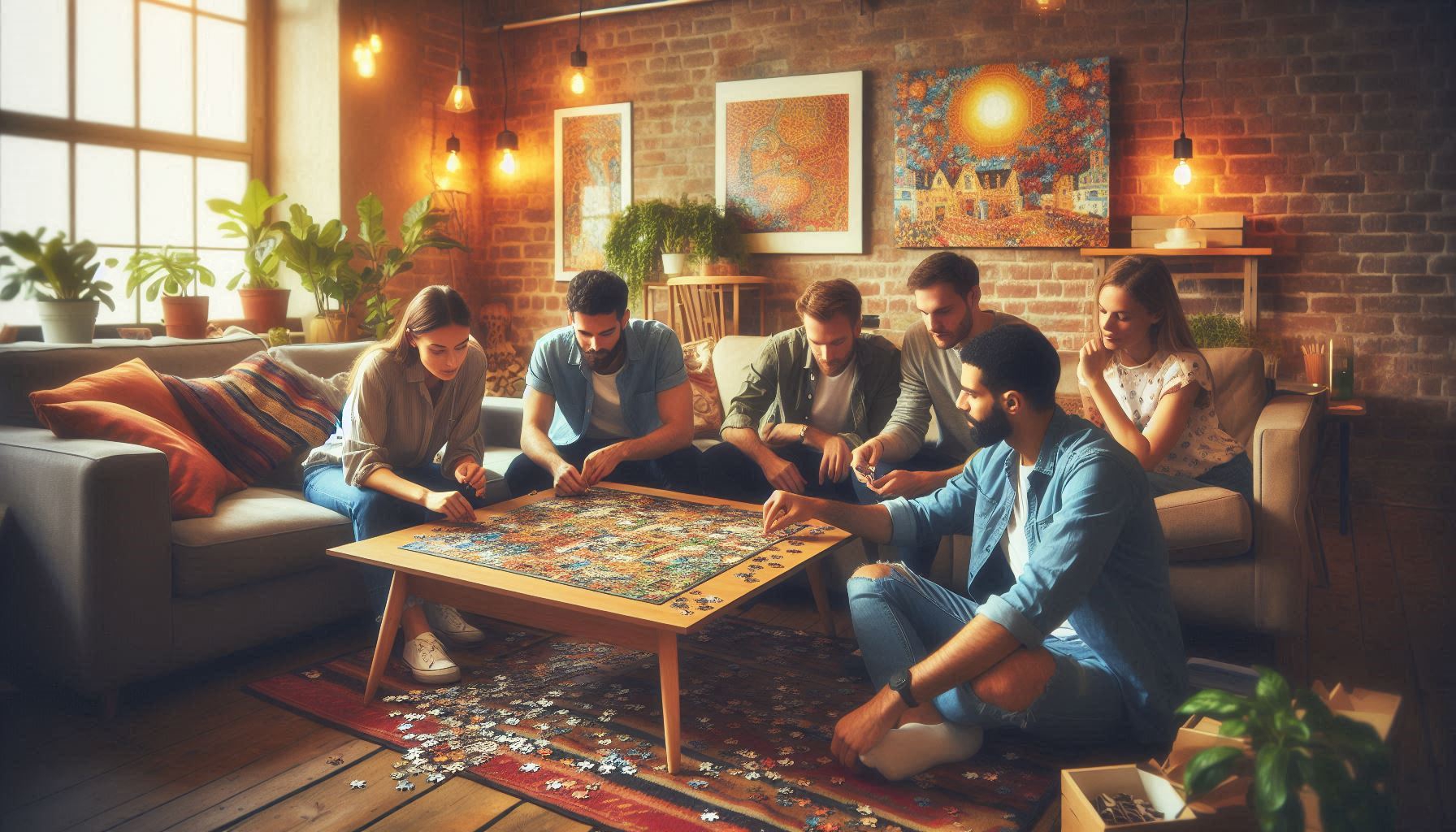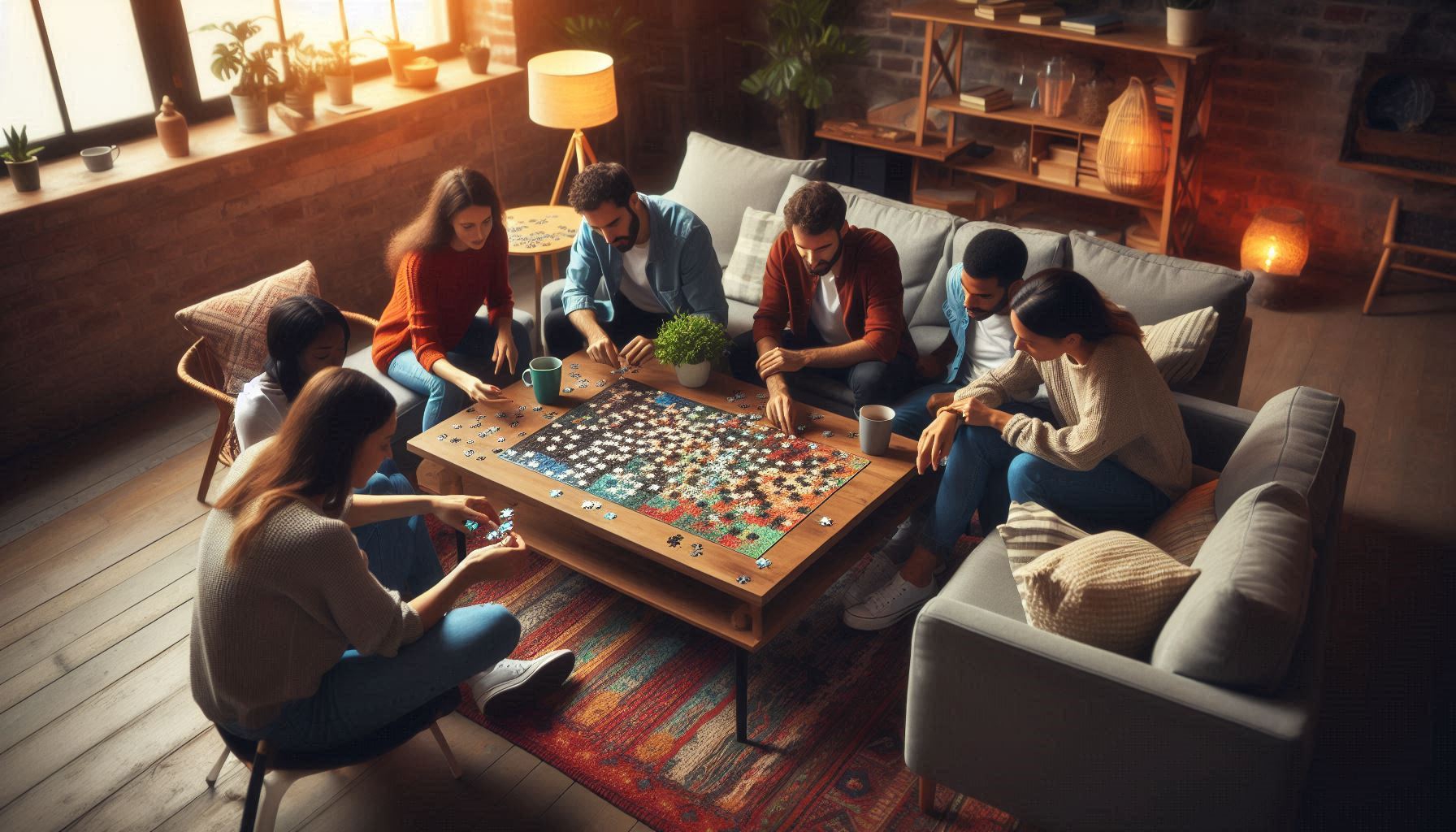How to Create a Jigsaw Puzzle: A Step-by-Step Guide for Beginners
Jigsaw puzzles are a timeless pastime that brings joy, relaxation, and a sense of accomplishment to people of all ages. Whether you’re a puzzle enthusiast or looking for a creative project, learning how to create a jigsaw puzzle can be a rewarding experience. In this comprehensive guide, we’ll walk you through the process of making your own jigsaw puzzle from scratch, including materials, tools, and step-by-step instructions. By the end of this article, you’ll be ready to design and craft a unique puzzle that’s perfect for personal use or as a thoughtful gift.
Why Create Your Own Jigsaw Puzzle?
Creating a custom jigsaw puzzle offers several benefits:
-
Personalization: You can use your favorite photos, artwork, or designs to make a one-of-a-kind puzzle.
-
Creative Outlet: Designing and assembling a puzzle is a fun and engaging way to express your creativity.
-
Gift Idea: A custom puzzle makes a unique and memorable gift for friends and family.
-
Educational Tool: Puzzles can be used to teach children problem-solving skills, patience, and hand-eye coordination.
Materials and Tools Needed to Create a Jigsaw Puzzle
Before you start, gather the following materials and tools:
-
Image or Design: Choose a high-resolution photo, artwork, or graphic for your puzzle.
-
Puzzle Board: Use sturdy cardboard, foam board, or pre-cut puzzle blanks.
-
Adhesive: Spray adhesive or glue sticks to attach the image to the puzzle board.
-
Cutting Tools: A jigsaw, scroll saw, or laser cutter for precise cutting.
-
Puzzle Template: A printed template or stencil to guide your cuts.
-
Protective Coating: Mod Podge or clear sealant to protect the image.
-
Ruler and Pencil: For measuring and marking the puzzle pieces.
-
Cutting Mat: To protect your work surface.
Step-by-Step Guide to Creating a Jigsaw Puzzle
Step 1: Choose Your Image
The first step in creating a jigsaw puzzle is selecting the right image. Here are some tips:
-
Use a high-resolution photo or graphic to ensure clarity and detail.
-
Choose an image with distinct colors and patterns to make the puzzle more engaging.
-
Consider the theme of the puzzle, such as landscapes, family photos, or abstract art.
Step 2: Prepare the Puzzle Board
-
Cut the puzzle board to your desired size using a ruler and craft knife.
-
Ensure the board is smooth and free of debris.
Step 3: Attach the Image to the Board
-
Apply adhesive evenly to the back of the image or the puzzle board.
-
Carefully place the image onto the board, smoothing out any air bubbles.
-
Allow the adhesive to dry completely.
Step 4: Protect the Image
-
Apply a thin layer of Mod Podge or clear sealant over the image to protect it from wear and tear.
-

Step 5: Create a Puzzle Template
-
Decide on the number of pieces and the shape of the puzzle.
-
Use a ruler and pencil to draw a grid on the back of the puzzle board.
-
Alternatively, print a puzzle template and trace it onto the board.
Step 6: Cut the Puzzle Pieces
-
Use a jigsaw, scroll saw, or laser cutter to carefully cut along the lines of your template.
-
For hand-cut puzzles, use a craft knife or utility knife for precision.
-
Take your time to ensure clean and accurate cuts.
Step 7: Sand the Edges
-
Lightly sand the edges of each puzzle piece to remove any rough spots.
-
Wipe away dust with a clean cloth.
Step 8: Test and Assemble the Puzzle
-
Mix the pieces and try assembling the puzzle to ensure they fit together properly.
-
Make any necessary adjustments to the pieces.
Step 9: Package Your Puzzle
-
Store the puzzle pieces in a sturdy box or bag.
-
Consider adding a label or instructions for assembly.
Tips for Designing a Great Jigsaw Puzzle
-
Choose the Right Difficulty Level:
-
For beginners, opt for larger pieces and fewer cuts.
-
For advanced puzzlers, increase the number of pieces and use intricate shapes.
-
-
Use High-Quality Materials:
-
Invest in durable puzzle boards and sharp cutting tools for a professional finish.
-
-
Experiment with Shapes:
-
Get creative with piece shapes, such as animals, letters, or custom designs.
-
-
Add a Personal Touch:
-
Include a personal message or signature on the puzzle for a unique touch.
-
Alternative Methods to Create a Jigsaw Puzzle
If you don’t have the tools or time to make a puzzle from scratch, consider these alternatives:
1. Online Puzzle Makers
Many websites allow you to upload an image and create a custom puzzle. They will print and ship the puzzle to you. Some popular options include:
-
Shutterfly
-
PuzzleYou
-
Ravensburger
2. Puzzle Kits
Purchase a DIY puzzle kit that includes pre-cut puzzle blanks and instructions. Simply attach your image and follow the steps.
3. 3D Printing
If you have access to a 3D printer, you can design and print your own puzzle pieces.
Creative Ideas for Custom Jigsaw Puzzles
-
Family Photos: Create a puzzle from a cherished family photo or vacation snapshot.
-
Educational Puzzles: Design puzzles with maps, alphabets, or numbers for children.
-
Artwork: Turn your paintings or drawings into a puzzle.
-
Event Memorabilia: Commemorate weddings, birthdays, or anniversaries with a custom puzzle.
-
Branding: Use puzzles as promotiona

Frequently Asked Questions (FAQs)
1. What is the best material for making a jigsaw puzzle?
Sturdy cardboard or foam board is ideal for DIY puzzles. For professional-quality puzzles, consider using wood.
2. How do I choose the right image for my puzzle?
Select a high-resolution image with vibrant colors and clear details. Avoid images with too much blank space.
3. Can I make a puzzle without cutting tools?
Yes, you can use pre-cut puzzle blanks or online services to create a custom puzzle.
4. How many pieces should my puzzle have?
The number of pieces depends on the difficulty level. Start with 50-100 pieces for beginners and increase for more challenge.
5. How do I store my custom puzzle?
Use a puzzle storage box or a resealable bag to keep the pieces organized.
Conclusion
Creating a jigsaw puzzle is a fun and fulfilling project that allows you to showcase your creativity and craftsmanship. Whether you’re making a puzzle for yourself, your family, or as a gift, the process is both enjoyable and rewarding. By following this step-by-step guide, you’ll be able to design and assemble a custom puzzle that’s as unique as you are.
So, gather your materials, choose your favorite image, and start creating your very own jigsaw puzzle today! Whether you’re a beginner or an experienced crafter, the possibilities are endless. Happy puzzling!




